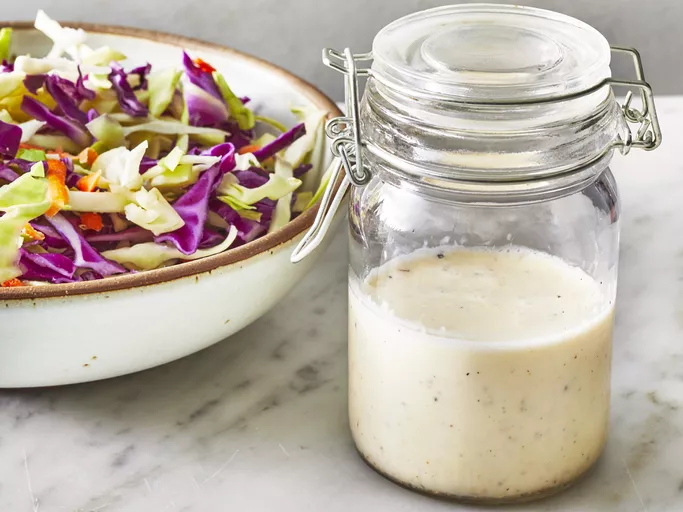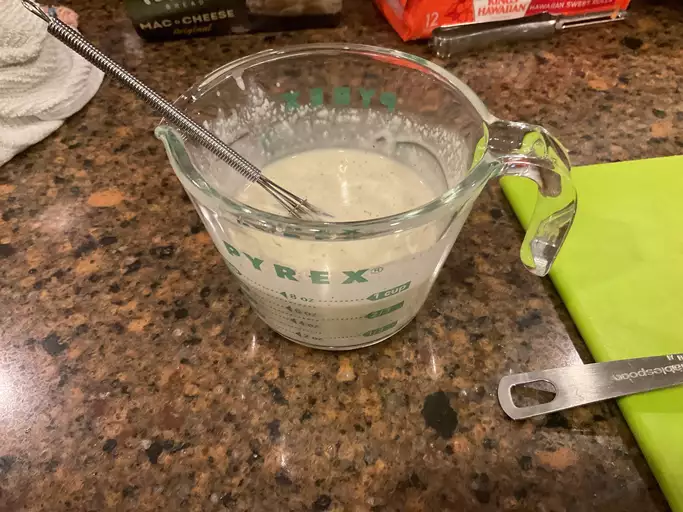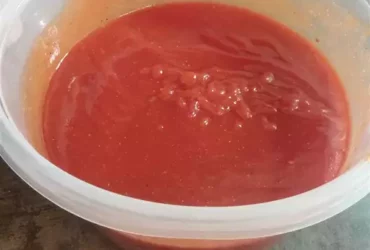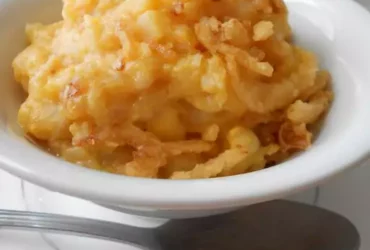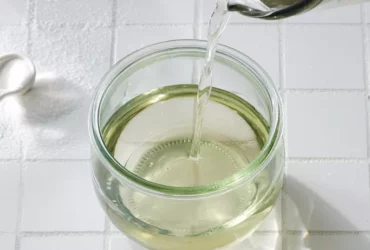Ingredients
Fresh ingredients are essential for a delicious coleslaw
Coleslaw is a classic side dish made from shredded cabbage and mayonnaise-based dressing, but its flavor and texture can be elevated by using fresh ingredients. When it comes to making a delicious coleslaw, the quality of the ingredients used is paramount. Fresh vegetables, in particular, are essential for achieving the perfect balance of sweetness, crunch, and tanginess.
The first key ingredient for a great coleslaw is shredded cabbage. Look for crisp, green or red cabbage with no signs of wilting or browning. The fresher the cabbage, the better it will hold its shape in the slaw and provide a satisfying crunch.
Other essential vegetables that add depth and flavor to coleslaw include grated carrots and chopped onions. Choose firm, unblemished carrots and sweet onions like Vidalia or yellow onions for the best results. Be sure to chop these ingredients finely so they’re evenly distributed throughout the slaw.
Lettuce can also be added to coleslaw, but use a mild variety that won’t overpower the other flavors. Iceberg lettuce is a good option, as it provides a crunchy texture without adding too much flavor.
While mayonnaise is often used in traditional coleslaw recipes, some people prefer a lighter or dairy-free alternative like Greek yogurt or sour cream. Either way, choose a high-quality product with minimal added sugars and preservatives.
Seasonings are also crucial for balancing the flavors in coleslaw. Salt is essential for bringing out the natural sweetness of the vegetables, while sugar adds a touch of warmth without overpowering the other flavors. Black pepper and vinegar (such as apple cider or white wine vinegar) can add depth and tanginess to the slaw.
Some recipes also include additional ingredients like grated ginger or garlic for added flavor, but feel free to experiment with your own favorite spices and seasonings to find the perfect balance of flavors for you.
In summary, using fresh and high-quality ingredients is essential for creating a delicious coleslaw that’s bursting with flavor and texture. By selecting the freshest cabbage, carrots, onions, lettuce, mayonnaise or yogurt, and seasonings, you’ll be well on your way to making the perfect coleslaw every time!
The ingredients used in the Easy Coleslaw Dressing Recipe are a crucial aspect that sets it apart from other coleslaw dressings. Here’s a comprehensive overview of each ingredient and its role in the recipe:
Main Ingredients
- Cabbage: This is the primary component of coleslaw, providing crunch and texture. You can use either green or red cabbage for this recipe.
- Carrots: Grated carrots add a pop of color and sweetness to the coleslaw. Feel free to adjust the amount according to your preference.
Coleslaw Dressing Ingredients
- Mayonnaise: This is the base of the dressing, providing creaminess and richness. Use a high-quality mayonnaise for the best results.
- Apple cider vinegar: This adds a tangy flavor and helps to balance out the sweetness of the carrots.
- Mustard (optional): Adding a bit of mustard can enhance the flavor, but feel free to omit it if you’re not a fan of spicy flavors.
- Salt and pepper: These are used to season the dressing to taste. Use as much or as little as needed to suit your taste buds.
Other Ingredients (optional)
- Chopped onion: If you like a bit of onion flavor in your coleslaw, feel free to add some chopped onion to the mix.
- Grated ginger: For an extra kick, try adding a pinch of grated ginger to the dressing for added depth of flavor.
The beauty of this recipe lies in its simplicity and versatility. You can adjust the ingredients to suit your taste preferences and dietary needs. Don’t be afraid to experiment and add your own twist to make it even more delicious!
1 cup of shredded cabbage (look for green or red varieties)
The foundation of a delicious coleslaw lies in its ingredients, particularly 1 cup of shredded cabbage.
When selecting this crucial ingredient, it’s essential to consider both green and red varieties to add some visual appeal and depth to the dish. The crunchy texture of shredded cabbage is unparalleled, making it a perfect addition to coleslaw.
The choice between green and red cabbage ultimately depends on personal preference and the desired flavor profile. Green cabbage tends to have a milder taste, while red cabbage has a slightly sweeter and earthier flavor.
Make sure to look for high-quality shredded cabbage that is crisp and free of any blemishes or wilting. This will ensure that your coleslaw dressing recipe turns out with the perfect texture and flavor.
In addition to shredded cabbage, other essential ingredients for easy coleslaw dressing include mayonnaise, apple cider vinegar, sugar, salt, and black pepper. These components work harmoniously together to create a tangy and creamy dressing that complements the crunch of the cabbage perfectly.
1 cup of grated carrots (use the food processor to get nice, thin shreds)
To make a delicious and refreshing coleslaw dressing, you’ll want to start with some essential ingredients. Here’s what you’ll need:
For our coleslaw recipe, we’re focusing on the perfect blend of tangy and sweet flavors. You can use this dressing for traditional cabbage-based slaws or get creative by using different combinations of vegetables.
The core ingredients in this easy coleslaw dressing recipe include:
- 1 cup of grated carrots (use the food processor to get nice, thin shreds)
This may seem like a lot of carrot, but it adds a lovely sweetness and helps balance out the tanginess from other ingredients. You can adjust the amount based on your personal preference.
Other key players in this coleslaw dressing recipe include:
- 1 cup of mayonnaise (full-fat, please)
This provides a rich and creamy base for our dressing. You can also use Greek yogurt or sour cream as alternatives if you’re looking for a lighter option.
We’ll also be using:
- 2 tablespoons of apple cider vinegar (or white vinegar)
This adds a nice tanginess and helps balance out the sweetness from our carrots.
You’ll also want to add some flavor with:
- 1 teaspoon of Dijon mustard (not regular mustard, please)
This gives our dressing a bit of zing and helps bring everything together.
For the seasonings, we’ll be using:
- Salt (to taste)
- A pinch of salt brings out all the flavors in this recipe. Use to taste!
- Finally, add some chopped fresh herbs like parsley or dill for garnish and extra flavor.
1/4 cup of mayonnaise (preferably Duke’s Mayonnaise, which is lower in calories and fat)
The key to a great coleslaw dressing is using high-quality ingredients, and one of the most essential components is mayonnaise. While it’s tempting to use a lower-calorie or non-dairy alternative, traditional mayonnaise like Duke’s is actually a better choice for several reasons.
Duke’s Mayonnaise has a rich, creamy texture that helps to bring all the flavors together in your coleslaw dressing. Its slightly sweeter and more tangy flavor profile also complements the natural sweetness of the cabbage and carrots perfectly, adding depth and complexity to the dish without overpowering it.
Compared to lower-calorie or non-dairy alternatives, Duke’s Mayonnaise has a richer, more satisfying mouthfeel that helps to coat your taste buds with every bite. This is especially important in a coleslaw dressing, where you want the flavors to meld together smoothly and evenly.
In addition, using traditional mayonnaise like Duke’s ensures that your coleslaw dressing doesn’t become too watery or separated, which can happen when you use lighter alternatives. The emulsion of oil and egg yolks in Duke’s Mayonnaise creates a stable base for the dressing, allowing it to hold its shape and texture even after refrigeration.
Of course, if you’re watching your calorie intake or have dietary restrictions, there are many lower-calorie mayonnaise options available. However, if you’re looking for a rich, creamy coleslaw dressing with authentic flavor, traditional mayonnaise like Duke’s is the way to go.
2 tablespoons of cider vinegar
When it comes to creating a delicious and refreshing coleslaw, the type of vinegar used plays a significant role. For our Easy Coleslaw Dressing Recipe, we recommend using cider vinegar as it provides a perfect balance of tanginess and flavor.
Cider vinegar is made from fermented apples and contains a range of beneficial compounds that enhance the taste and nutritional value of the dressing. It has a distinct, slightly sweet flavor that complements the sweetness of the cabbage and other vegetables in the slaw.
To get started with our coleslaw recipe, you will need to mix 2 tablespoons of cider vinegar with a combination of mayonnaise, sugar, salt, and spices (such as black pepper and paprika) in a bowl. The ratio of ingredients can be adjusted to suit your personal taste preferences, but we find that this specific amount provides the perfect balance of flavors.
Here are some key characteristics of cider vinegar:
- Made from fermented apples
- Has a distinct, slightly sweet flavor
- Contains beneficial compounds that enhance the taste and nutritional value of the dressing
- Perfect for adding a tangy flavor to coleslaw without overpowering it
The acidity in cider vinegar also helps to preserve the freshness of the vegetables in the slaw, making it an excellent choice for storing and serving your Easy Coleslaw Dressing Recipe. Simply mix all the ingredients together, refrigerate until chilled, and serve as a side dish or topping for your favorite meals.
1 teaspoon of Dijon mustard
Dijon mustard is a type of mustard that originates from Dijon, France. It’s made from brown or white mustard seeds, vinegar, salt, and spices, but it does not contain any whole mustard seeds.
One key characteristic of Dijon mustard is its coarse texture and slightly sweet flavor profile, which sets it apart from other types of mustard, such as yellow mustard. This unique flavor and texture make it a popular ingredient in many recipes, including the Easy Coleslaw Dressing Recipe featured here.
Why Dijon Mustard Works Well in Coleslaw
Dijon mustard adds a tangy, slightly sweet flavor to coleslaw that complements the natural sweetness of the cabbage and carrots. It also helps to balance out the acidity from the vinegar and other ingredients in the recipe.
The Flavor Profile of 1 Teaspoon of Dijon Mustard
When you add 1 teaspoon of Dijon mustard to a recipe, it contributes a rich, slightly sweet flavor that’s both tangy and savory. This small amount of Dijon mustard can make a big difference in the overall taste of your coleslaw.
How to Use Dijon Mustard in Coleslaw
To use Dijon mustard in coleslaw, simply mix it with other ingredients like mayonnaise, vinegar, sugar, salt, and spices. The exact proportions will depend on the specific recipe you’re using, but 1 teaspoon of Dijon mustard is a good starting point.
Benefits of Using Dijon Mustard in Coleslaw
Some benefits of using Dijon mustard in coleslaw include:
- It adds flavor and depth to the coleslaw, making it more interesting and complex.
- It helps to balance out the acidity from other ingredients like vinegar.
- It complements the natural sweetness of the cabbage and carrots.
In summary, Dijon mustard is a key ingredient in many recipes, including coleslaw. Its unique flavor profile and texture make it an excellent addition to any recipe that calls for a tangy, slightly sweet flavor.
Salt and pepper to taste
The key to a delicious and refreshing coleslaw dressing is to balance the sweetness, tanginess, and savory flavors. To achieve this, we need to focus on the right ingredients.
Here’s what you’ll need for a basic coleslaw dressing recipe:
- Mayonnaise
- Apple cider vinegar or white wine vinegar
- Cream cheese or sour cream
- Cucumber juice (optional)
- Pickle relish (optional)
The crucial elements in this recipe are the salt and pepper to taste. Using high-quality salt is essential, as it will enhance the flavors of your coleslaw. You can choose from different types of salt, such as sea salt or kosher salt.
Salt plays a significant role in balancing out the sweetness and tanginess of the dressing. When adding salt to taste, be mindful that you’re not over-salting, which can quickly become overpowering. Start with a small amount (about 1/4 teaspoon) and adjust as needed.
Paper is another essential component in achieving a well-balanced coleslaw dressing. A generous sprinkle of black pepper will not only add flavor but also provide a nice aroma to your dish.
When adding salt and pepper to taste, remember that the amount you use will depend on personal preferences and regional flavor profiles. For example, if you’re from the Southern United States, you may prefer a more pronounced saltiness, while those from the Northeast might opt for a milder seasoning.
In any case, always add salt and pepper in small increments to ensure that your coleslaw dressing doesn’t become too overpowering. Taste as you go, and adjust the seasonings until you achieve the perfect balance of flavors.
The ingredients required for an easy coleslaw dressing recipe include a combination of pantry staples and condiments that complement the natural flavors of shredded cabbage and other vegetables.
Here are some essential ingredients:
- Cider vinegar: This adds a tangy flavor to the slaw and helps bring out the sweetness of the cabbage.
- Mayonnaise: A base for creamy dressings, mayonnaise provides richness and smoothness to the coleslaw.
- Honey or sugar: A sweetener that balances out the acidity from the vinegar and adds a touch of warmth to the dressing.
Fine-tuning ingredients can be added to enhance the flavor:
- Mustard (such as Dijon or yellow mustard): Adds depth and a slightly spicy kick.
- Salt: Used sparingly, salt brings out flavors in the other ingredients.
- Pepper: Like salt, pepper is used to enhance flavor rather than overpower it.
- Fresh herbs (such as parsley, dill, or basil): A few sprigs of fresh herbs can add a bright, fresh taste and visual appeal.
The quantity of each ingredient may need to be adjusted depending on personal taste preferences. For example:
- If you prefer a sweeter slaw, increase the amount of honey or sugar.
- For a tangier slaw, add more cider vinegar.
- To make the slaw creamier, use more mayonnaise.
The beauty of making your own coleslaw dressing is that it can be tailored to suit individual tastes. By adjusting the balance of ingredients, you can create a unique flavor profile that complements your favorite foods and dietary preferences.
Instructions
Create the slaw dressing with a special trick
To create an authentic and mouthwatering coleslaw dressing, follow these steps:
Ingredients
- Cider Vinegar: This is the base of your slaw dressing. It adds a tangy flavor and helps to preserve the coleslaw.
- Mayonnaise: This provides creaminess and richness to balance out the acidity from the cider vinegar.
- Sugar or Honey: You can use either, depending on your preference. Sugar adds a subtle sweetness, while honey provides a more robust flavor with hints of floral notes.
- Salt: This is crucial for bringing out the flavors in all ingredients and balancing the taste.
- Black Pepper: Adds depth to your slaw dressing, especially when freshly ground.
- Diced Onions or Shallots: These add a pungency that complements the flavors of the vinegar and mayonnaise.
- Celery Seed (optional): This can enhance the overall freshness in your slaw dressing. Use sparingly as it has a strong flavor.
The Special Trick
- Use a Microplane grater or fine grater for the onions or shallots to release their oils and flavors into the dressing. This step is key as it adds depth without adding liquid, unlike finely chopping which can make the slaw dressing too watery.
Preparing the Slaw Dressing
- In a bowl, whisk together the cider vinegar and mayonnaise until well combined. The acidity from the vinegar should dissolve into the creamy mayonnaise.
- Add sugar or honey to taste (about 1-2 tablespoons) and whisk until dissolved. You can adjust this to your sweet preference.
- Whisk in salt and black pepper until they’re fully incorporated.
- Use the microplane grater or fine grater on about a quarter of an onion (depending on size), adding it into the dressing bowl. Whisk well to distribute the grated onions evenly throughout the slaw dressing.
- Add diced celery seed if using, whisking until combined.
For best results, allow your slaw dressing to sit at room temperature for about an hour or refrigerate for a couple of hours before serving. This allows all flavors to meld together and the onions’ flavors to integrate fully into the dressing.
Serving
- Shred or slice your preferred cabbage varieties (about 1 head).
- Combine the cabbage with about a third of the slaw dressing, saving the rest for future use. You can adjust the amount based on your personal preference for dressing to vegetables ratio.
This recipe yields approximately one batch of coleslaw dressing and enough cabbage to feed about four people as a side dish or two as a main course with additional toppings such as chicken, bacon, etc.
Instructions are an essential aspect of any recipe or task, serving as a guide to help individuals follow a series of steps to achieve a desired outcome. In the context of cooking, instructions are particularly crucial in recipes like the Easy Coleslaw Dressing Recipe, where the correct sequence and proportions of ingredients can make all the difference between a successful dish and one that falls short.
The importance of clear instructions cannot be overstated. When instructions are well-written, concise, and easy to understand, it sets the stage for a positive cooking experience. Conversely, ambiguous or incomplete instructions can lead to confusion, mistakes, and ultimately, frustration. This is especially true for novice cooks who may not have prior experience with preparing certain dishes.
Effective instructions should take into consideration several key elements. First, they should be clear and unambiguous in their language, avoiding any potential sources of confusion. Second, the steps outlined in the instructions should be logically organized, making it easy to follow along as one works through each step. This organization can include breaking down complex tasks into manageable components or using visual aids like images or videos to illustrate key points.
A critical aspect of instructions is the use of specific measurements and quantities. In a recipe like Easy Coleslaw Dressing, exact proportions are crucial for achieving the right balance of flavors. This is where the precision of instructions can make all the difference between success and failure. By providing clear guidelines on ingredient quantity, cooking time, and other critical factors, instructions empower cooks to reproduce the desired outcome with confidence.
Furthermore, good instructions should be adaptable to different skill levels. Recipes like Easy Coleslaw Dressing are perfect examples of this adaptability, as they offer a range of options that cater to both novice and experienced cooks. By providing variations in ingredient quantities or suggesting shortcuts for busy cooks, instructions can ensure that the recipe remains accessible and enjoyable regardless of one’s level of expertise.
In addition to these practical considerations, good instructions also contribute to an engaging and inclusive cooking experience. The use of descriptive language, colorful imagery, or even personal anecdotes can make the process of following instructions a more enjoyable and satisfying experience. By conveying passion for cooking and enthusiasm for sharing recipes, instructions can foster a sense of connection between cooks and the recipe itself.
In summary, clear, concise, well-organized, and adaptable instructions are essential components of any effective recipe, including Easy Coleslaw Dressing Recipe with Video. By providing specific measurements, logically organized steps, and engaging narrative, instructions empower cooks to achieve successful outcomes while fostering a sense of enjoyment and connection in the cooking process.
In a blender or food processor, mix the mayonnaise, cider vinegar, Dijon mustard, salt, and pepper until smooth.
The key to creating a great coleslaw dressing is understanding the importance of proper instructions. When it comes to combining ingredients in a blender or food processor, measuring accuracy and following a logical sequence are crucial.
Start by gathering all the necessary components: mayonnaise, cider vinegar, Dijon mustard, salt, and pepper. Before proceeding, ensure you have the correct quantities of each ingredient to avoid any errors during mixing.
The order in which you combine these ingredients is significant. Begin by adding the mayonnaise, a thick and creamy condiment that serves as the base for your coleslaw dressing. Then, introduce the cider vinegar, a tangy ingredient that provides balance to the richness of the mayonnaise.
Next, add the Dijon mustard, which adds a slightly spicy kick and helps bind all the ingredients together. Make sure to incorporate this well so it doesn’t clump or leave lumps in your dressing.
After that, sprinkle some salt and pepper over the top of the mixture for added depth and flavor. Here’s where you get to customize the seasoning level according to your taste preferences!
Now that all the ingredients are incorporated, use the blender or food processor on high speed to blend everything together until it reaches a smooth consistency. Be patient and take breaks if necessary – this step requires some time and effort.
The final result should be a deliciously uniform coleslaw dressing that’s perfect for topping your favorite salads, veggies, or even as a dip for crackers!
Add the shredded cabbage and grated carrots to the blender or food processor and pulse until well combined.
When it comes to following instructions, clarity and specificity are key. The phrase “Add the shredded cabbage and grated carrots to the blender or food processor” provides a clear understanding of what action needs to be taken next in the recipe. However, when it comes to combining these ingredients, the instruction “pulse until well combined” leaves room for interpretation.
The word “pulse” can be somewhat ambiguous, as different blenders and food processors may have varying levels of power and sensitivity. Some people may interpret this as a gentle pulsing action, while others may assume a more vigorous or intense pulsation. This could result in either an under-processed or over-processed mixture.
Furthermore, the phrase “until well combined” is also somewhat subjective. What constitutes “well combined” can vary depending on individual perspectives and expectations. Some people may consider it adequately mixed when the ingredients are just barely combined, while others may prefer a more thorough and uniform blend.
To avoid any potential confusion or inconsistencies, it would be beneficial to provide additional guidance on what “pulse until well combined” entails in practical terms. This could involve specifying the number of pulses required or providing a clearer definition of what constitutes a “well combined” mixture.
For example, instead of simply saying “pulse until well combined,” the instruction could specify something like: “Pulse for 2-3 seconds at a time, stopping to scrape down the sides as needed, until the ingredients are evenly distributed and there are no visible chunks or strands.” This would provide more concrete guidance and help ensure that everyone achieves the same level of mixture uniformity.
Transfer the slaw dressing to a serving bowl and refrigerate for at least 30 minutes to allow the flavors to meld together.
This step is a crucial part of allowing the flavors in the slaw dressing to combine and mature, resulting in a more complex and balanced taste experience. When you transfer the slaw dressing to a serving bowl, make sure it’s a container that can withstand refrigeration temperatures.
It’s also essential to ensure the bowl is clean and sanitized before adding the slaw dressing to prevent any contamination or bacterial growth. This step not only enhances the flavor but also ensures food safety.
The refrigerator will help to chill the slaw dressing, which is crucial in slowing down the breakdown of the ingredients’ flavors. If you’re looking for an ideal time frame, refrigerating it for at least 30 minutes can make a significant difference. However, allowing it to chill for several hours or even overnight may result in a more refined flavor profile.
During this time, the acidity from the vinegar will help break down some of the sugars present in the dressing, creating a more harmonious balance between flavors. Similarly, the salt will start to draw out moisture from the ingredients, intensifying their natural flavors.
After refrigerating the slaw dressing for the recommended period, it’s ready to be served alongside your favorite dishes. You can apply it directly to salads, use it as a topping for sandwiches or burgers, or even serve it on the side for dipping vegetables.
Instructions are essential elements that guide individuals through various tasks, procedures, and activities. In the context of the Easy Coleslaw Dressing Recipe, instructions play a crucial role in ensuring that users can prepare and enjoy this delicious condiment with ease.
Effective instructions should be clear, concise, and easy to understand. They should provide step-by-step guidance on how to complete a task or procedure, reducing confusion and increasing the likelihood of successful outcomes.
The following are some key characteristics of effective instructions:
- Clear and simple language: Instructions should be written in plain language that is easy to comprehend. Avoid using technical jargon or complex terminology that may confuse users.
- Step-by-step guidance: Break down the task into manageable steps, providing detailed instructions for each step. This helps users understand what needs to be done and when.
- Visual aids: Incorporate images, videos, or diagrams to illustrate key points and provide additional context. Visual aids can help clarify complex concepts and make instructions more engaging.
- Relevant examples: Provide real-world examples or scenarios that demonstrate how to apply the instructions. This helps users see the practical application of the information.
- Ongoing feedback: Encourage users to ask questions, provide feedback, or seek clarification if needed. This ensures that instructions are being understood and implemented correctly.
Instructions for the Easy Coleslaw Dressing Recipe should follow these guidelines:
- Gather all necessary ingredients, including shredded cabbage, mayonnaise, vinegar, sugar, salt, and black pepper.
- In a medium bowl, combine the shredded cabbage, mayonnaise, vinegar, sugar, salt, and black pepper. Mix well until the ingredients are fully incorporated.
- Chill the coleslaw dressing in the refrigerator for at least 30 minutes before serving.
By following these instructions, users can create a delicious and refreshing Easy Coleslaw Dressing Recipe that complements various dishes, from BBQ to sandwiches. Remember to adjust the amount of mayonnaise and vinegar according to personal taste preferences. Enjoy!
Expert Tips
Make your coleslaw like a pro with these expert tips!
To make an exceptional coleslaw like a pro, follow these expert tips:
Choose the Right Cabbage
Cole slaw is all about texture and flavor balance. Opt for a mix of green and red cabbage or use Savoy or Napa cabbage for added crunch and a more delicate taste.
Don’t Over-Chop the Cabbage
Shred the cabbage into thin strips, but avoid over-processing it in a food processor or with a box grater. This will help retain texture and prevent the slaw from becoming too soggy.
Select the Perfect Ratio of Veggies to Dressing
The key to an excellent coleslaw is finding the ideal balance between the vegetables, dressing, and seasonings. Aim for a ratio of 60% cabbage and 40% other veggies (carrots, onions, etc.) to dressing.
Add Depth with Onions and Carrots
Grate or finely chop carrots and red onions to add natural sweetness and a punch of flavor to your slaw. This will also enhance the texture and visual appeal.
Use a High-Quality Mayonnaise or Vinaigrette
A good mayonnaise or vinaigrette is essential for an excellent coleslaw dressing. Look for a high-quality store-bought option or make your own using ingredients like apple cider vinegar and Dijon mustard.
Don’t Forget the Flavor Boosters
Add some extra flavor with common seasonings like salt, black pepper, paprika, garlic powder, and dried dill weed. You can also add a pinch of cayenne pepper for an extra kick.
Let it Chill in the Fridge
Allow your slaw to chill in the refrigerator for at least 30 minutes before serving to allow the flavors to meld together and the cabbage to soften slightly.
Customize to Your Taste
The best part about making coleslaw is that you can customize it to your taste preferences. Feel free to add or subtract ingredients, change up the dressing ratio, or use different seasonings to make it your own!
When it comes to creating a delicious coleslaw dressing recipe, there are several expert tips that can take your slaw game to the next level.
The first tip is to use a combination of vinegar and mayonnaise as the base of your dressing. This will give you a tangy and creamy flavor profile that’s essential for a great coleslaw.
Another key aspect of making a good coleslaw dressing is using high-quality seasonings and spices. A mixture of ground mustard, dried dill weed, and a pinch of salt can add depth and complexity to your dressing.
It’s also crucial to use fresh and crisp cucumbers, carrots, and other vegetables when making coleslaw. Not only will they provide a refreshing crunch, but their flavor will also shine through in the finished slaw.
A common mistake many people make is over-dressing their coleslaw. To avoid this, it’s best to start with a small amount of dressing and gradually add more as needed. You can always add more dressing, but it’s harder to remove excess dressing once it’s been applied.
Finally, don’t be afraid to experiment and customize your coleslaw dressing recipe to suit your personal taste preferences. Whether you prefer a lighter or creamier dressing, there are countless variations to try.
For an extra crispy slaw, try using a mandoline to shave the cabbage and carrots into thin strips.
For an extra crispy slaw, try using a mandoline to shave the cabbage and carrots into thin strips. This will help them to cook more evenly and quickly in the dressing, resulting in a crunchy texture that’s perfect for topping your favorite burgers or sandwiches.
An added benefit of using a mandoline is that it will also help to break down the cell walls of the vegetables, releasing their natural flavors and oils. This will give your slaw a brighter, more vibrant taste that’s simply irresistible.
When shaving the cabbage and carrots, be sure to slice them into uniform strips so that they cook evenly. You can also try adding in some other crunchy vegetables like red onion or bell peppers for added texture and flavor.
To take your slaw to the next level, try using a mixture of green and red cabbage. The sweetness of the red cabbage pairs perfectly with the tanginess of the dressing, creating a delicious and refreshing flavor combination that’s sure to please even the pickiest eaters.
Another expert tip is to let your slaw sit for at least 30 minutes before serving. This will allow the flavors to meld together and the vegetables to absorb all the goodness from the dressing, resulting in a slaw that’s packed with flavor and texture.
To make your coleslaw more substantial, add some chopped onion or diced bell pepper to the mix.
- Coleslaw can sometimes be a bit too light and lacking in texture, which is why adding some chopped onion or diced bell pepper to the mix can be a game-changer.
- The sweetness of the cabbage pairs perfectly with the pungency of the onions, creating a beautiful balance of flavors that will make your coleslaw more substantial and appealing.
- When choosing an onion for your slaw, consider using a red or yellow onion as they have a sweeter flavor compared to white onions.
- For bell peppers, use any color you prefer – green, red, orange, or even purple!
- The crunch from the bell peppers adds a delightful texture that complements the softness of the cabbage perfectly.
- You can chop the onion and bell pepper into small pieces, about 1/4 inch in size, to ensure they’re evenly distributed throughout your slaw.
- Remember, you don’t want your coleslaw to be too chunky or overpowering, so use these ingredients as a complement to enhance the flavor and texture rather than dominate it.
- This addition will also help mask any bitterness that some people might taste in certain types of cabbage – so go ahead and give those curly leaves a try!
Experiment with different types of vinegar, such as apple cider or white wine vinegar, for unique flavor profiles.
To take your coleslaw game to the next level, consider experimenting with different types of vinegar for unique flavor profiles.
- Apple cider vinegar adds a sweet and tangy taste that complements the natural sweetness of cabbage and carrots.
- On the other hand, white wine vinegar provides a more acidic and crisp note that cuts through the richness of mayonnaise and sour cream.
- Balsamic vinegar offers a sweeter and deeper flavor profile with hints of fruitiness, making it a great choice for a Mediterranean-inspired coleslaw.
- Champagne vinegar is another option that adds a light and airy texture to your slaw, perfect for summer salads or side dishes.
- Experimenting with different types of vinegar allows you to create unique flavor profiles that suit your taste preferences and the type of coleslaw you’re making.
Here are some tips to consider when choosing the right vinegar for your coleslaw:
- Consider the acidity level: Some vinegars, like white wine vinegar, have a higher acidity level than others, like apple cider vinegar.
- Think about the flavor profile you want to achieve: Sweet and tangy, crisp and acidic, or sweet and fruity?
- Experiment with different combinations of vinegars for unique flavors.
Some popular vinegar combinations include:
- Apple cider vinegar + white wine vinegar (for a balanced flavor)
- Balsamic vinegar + olive oil (for a Mediterranean twist)
- White wine vinegar + champagne vinegar (for a light and airy texture)
Remember, the key to making great coleslaw dressing is to taste and adjust as you go. Experiment with different types of vinegar and flavor combinations to find your perfect blend!
In the realm of cooking, mastering the art of making delicious coleslaw dressing is a skill that can elevate any meal to new heights. Whether you’re a seasoned chef or a culinary novice, having expert tips at your disposal can make all the difference between an average dish and a truly exceptional one.
First and foremost, it’s essential to understand the importance of balance in coleslaw dressing. A good recipe should have a harmonious blend of sweet, sour, salty, and umami flavors that complement each other beautifully. This means not being afraid to experiment with different combinations of ingredients until you find the perfect balance for your taste buds.
Another crucial aspect of making great coleslaw dressing is using high-quality ingredients. This includes selecting fresh and crisp cabbage, carrots, and onions, as well as opting for real mayonnaise instead of low-fat or non-dairy alternatives. Don’t be tempted to skimp on the quality of your ingredients, as this will only result in a subpar dish.
When it comes to preparing your coleslaw dressing, don’t overcomplicate things by adding too many extra ingredients. Stick to the basics and focus on creating a simple yet elegant sauce that lets the natural flavors of the vegetables shine through. This means avoiding unnecessary additions like sugar, salt, or spices that can overpower the delicate taste of the cabbage.
One of the most common mistakes people make when making coleslaw dressing is not allowing it to sit for long enough before serving. Allowing the flavors to meld together and the ingredients to chill will result in a much better-tasting slaw than if you serve it immediately after mixing the ingredients.
Finally, don’t be afraid to get creative with your coleslaw dressing recipe by adding unique twists or experimenting with different flavor combinations. This could include adding a dash of hot sauce for an extra kick, trying out a new type of vinegar, or even incorporating fresh herbs like dill or parsley into the mix.
By following these expert tips and being willing to experiment and adapt to your own tastes and preferences, you’ll be well on your way to creating truly exceptional coleslaw dressing that will elevate any meal to new heights.
- Best Datanyze Alternatives for 2025 - April 24, 2025
- Best Hunter.io Alternatives for 2025 - April 22, 2025
- Best Lead411 Alternatives for 2025 - April 22, 2025

